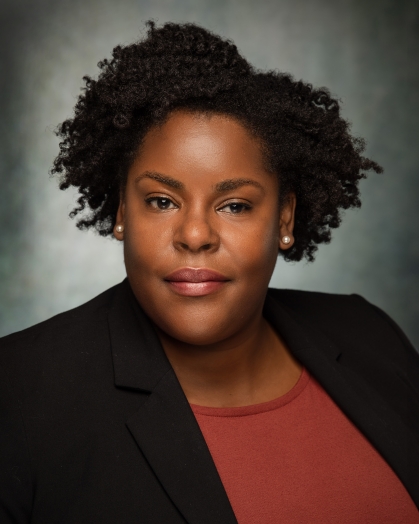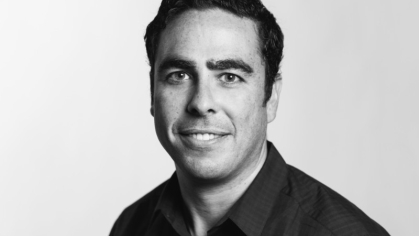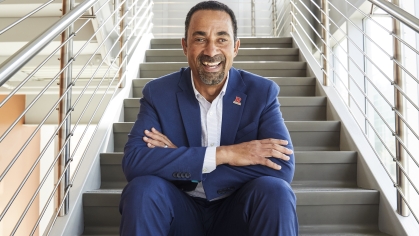“We need more engineers in public policy. I would encourage those who are interested to pursue it.” – Whitney Muse

Whitney Muse, the 2024 recipient of the School of Engineering Medal of Excellence for Distinguished Achievement in Industry, has been serving as the senior policy advisor in the White House Office of Clean Energy Innovation and Implementation (OCEII) since September 2023. Previously, she had been the inaugural chief of staff and senior advisor of the U.S. Department of Energy’s (DOE) Grid Deployment Office (GDO) where she worked to address the nation’s power generation, transmission, and grid resilience challenges. She has also served as the DOE’s chief of staff in its Office of Electricity. After graduating from Rutgers Engineering with a degree in applied sciences and engineering, with minors in Spanish and political science, she earned her M.A. in international energy and environment policy from the Johns Hopkins University Paul H. Nitze School of Advanced International Studies.
Congratulations on your Medal of Excellence! What does this award mean to you personally and professionally?
It’s a really exciting and profoundly surprising honor – and a really nice full circle moment.
When I was an undergraduate, I was trying to figure out what I wanted to do and how to combine engineering and policy for a career. Now I’m working in the White House on energy and climate policy.
How have you combined your interests and expertise in both engineering and public policy?
The classes I took at Rutgers provided an understanding of the physics that undergird the power infrastructure. Solutions must be based on the physics and electrical engineering principles that I learned. A lot of the problem-solving skills I honed at Rutgers are very helpful when it comes to tackling clean energy design and implementation problems.
What led to your White House appointment?
When I was chief of staff of the Department of Energy’s Grid Deployment Office, I worked to grow the office and stand-up new programs with external support from Congress and stakeholders. I had the opportunity to work with the White House on a lot of topics, so I’d been in conversation with a lot of the people who are now my colleagues. I’d prepared one of the first briefings for my boss, John Podesta, on what the DOE has done with transmission and grid investments, which continues to be one of my focuses in the White House.
What most excites you about your appointment?
Working in The White House is a really cool opportunity. It’s exciting to take meetings in the Roosevelt Room in the White House itself, and to be in the room where it happens, so to speak.
What are some of your responsibilities in your current role?
I work with agencies as they design and implement their Inflation Reduction Act (IRA) grant programs to address climate change through the power sector, buildings sector, and more. Coming from the DOE to The White House, I have a broader purview and aperture for what is happening across the administration.
For instance, I was the White House representative celebrating the June factory opening of a new solar tracker manufacturing facility in Nevada that produces steel tubes used to hold and rotate solar panels in solar power plants.
What’s the most important thing you do to further clean energy innovation and implementation?
We’re pushing to get as many of the programs established and funded from IRA awards by the end of the year. States, utilities, businesses and more make a difference in the lives of Americans. Many of the IRA funded programs are consumer facing, offering ways in which people can benefit and reduce their energy burden through home energy rebates and tax credits for cleaner homes and vehicles.
How can individuals help reach the nation’s clean energy goals?
We’re still working hard to meet goals for a clean power sector by 2035, and for a clean energy economy by 2050, but anywhere you begin is a welcome start to address these challenges. While they can only be met by collectivism, the great thing is there are many entry points for the journey.
Be mindful of the importance of the collective path to solutions, via political processes and key work set forth by the Biden administration, such as the Bipartisan Infrastructure Law, and the IRA. They have helped support everything from a heat pump in your home, solar panels on your roof with back-up battery storage and an electric vehicle parked out front with tax credits, rebates and grants.
Do you have any advice for today’s engineering students who want to impact public and environmental policy?
We need more engineers in public policy. I’d encourage those who are interested to pursue it. The quantitative analysis and diverse perspectives engineers bring to public policy lead to better policy outcomes. Regardless of their specific engineering degree, engineers have a role to play in public policy.
You said in 2021 that it was the coolest summer we will ever see again. Is this true today?
Yes. This is the coolest summer you’ll have for the rest of your life. We’ve not seen hurricane storms like Beryl this early in the season before, because the waters are warm enough. This speaks to our urgency in working to address extreme and accelerating climate changes.
Where do you like to cool off?
I enjoy a good day at DC area beaches since I can’t easily enjoy Jersey beaches.


